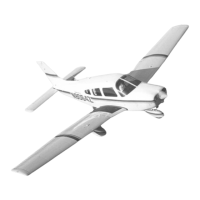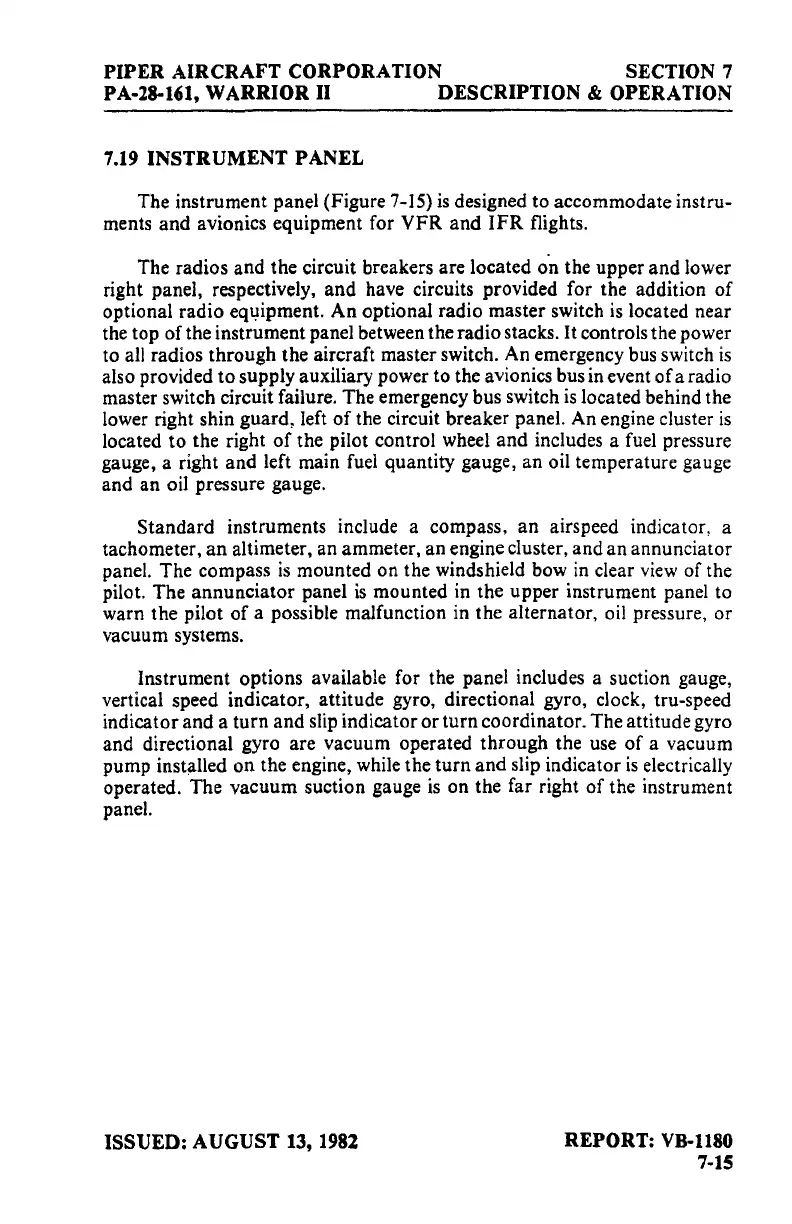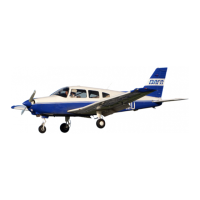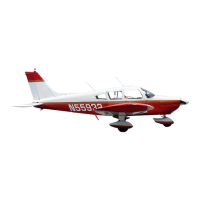PIPER AIRCRAFT CORPORATION SECTION 7
PA-18-161, WARRIOR
II
DESCRIPTION & OPERATION
7.19 INSTRUMENT PANEL
The instrument panel (Figure 7-15)
is
designed to accommodate instru-
ments and avionics equipment for VFR
and
IFR
flights.
The radios and the circuit breakers are located
o.n
the upper and lower
right panel, respectively, and have circuits provided for the addition
of
optional radio eql;lipment.
An
optional radio master switch
is
located near
the top of the instrument panel between the radio stacks.
It
controls the power
to all radios through the aircraft master switch. An emergency bus switch
is
also provided
to
supply auxiliary power to the avionics bus in event
of
a radio
master switch circuit failure. The emergency bus switch
is
located behind the
lower right shin guard, left
of
the circuit breaker panel. An engine cluster
is
located to the right
of
the pilot control wheel and includes a fuel pressure
gauge, a right and left main fuel quantity gauge, an oil temperature gauge
and an oil pressure gauge.
Standard instruments include a compass,
an
airspeed indicator, a
tachometer,
an
altimeter, an ammeter, an engine cluster, and
an
annunciator
panel. The compass
is
mounted on the windshield bow
in
clear
view
of the
pilot. The annunciator panel
is
mounted in the upper instrument panel to
warn the pilot
of
a possible malfunction in the alternator, oil pressure, or
vacuum systems.
Instrument options available for the panel includes a suction gauge,
vertical speed indicator, attitude gyro, directional gyro, clock, tru-speed
indicator and a turn and slip indicator
or
turn coordinator. The attitude gyro
and directional gyro are vacuum operated through the use
of
a vacuum
pump inst;liled
on
the engine, while the turn
and
slip indicator
is
electrically
operated. The vacuum suction gauge
is
on the far right
of
the instrument
panel.
ISSUED: AUGUST 13, 1981
REPORT: VB-1180
7-15

